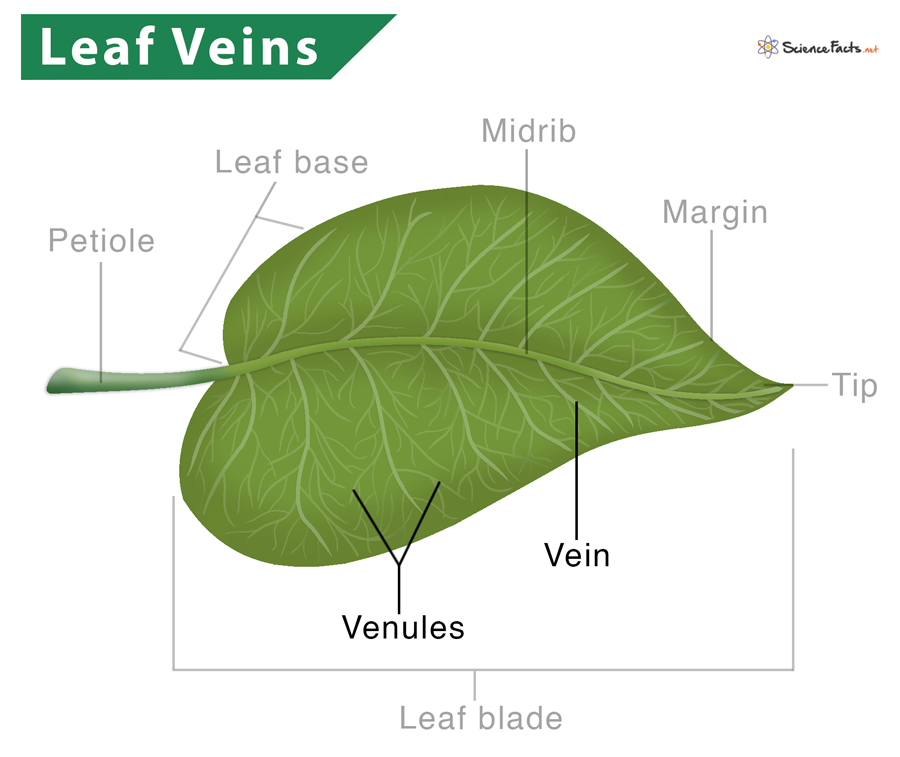Leaf Veins
The leaf veins are small channels or capillaries that transport water and minerals to and from the leaf of a plant. They are vascular tissues composed of xylem and phloem cells embedded mainly in the parenchyma and sometimes sclerenchyma cells. The outer layer of veins is made of bundle sheath cells.
They enter the leaf as a single vein, and inside it, they form multiple branches forming venules. The overall arrangement of veins in a leaf (venation pattern) in flowering plants varies from one plant lineage to another.
What are the Functions of Veins in a Leaf
1. Transportation
Leaves need water for photosynthesis. The primary function of leaf veins is transporting water, minerals, and food throughout the leaf.
The xylem moves fluids from the root upwards, entering the leaf through the midrib and then branching off with the help of venules. On the other hand, the phloem transports food produced in the leaf to all other parts of the plant.
2. Providing Structural Support
Plant veins also act as a skeleton, supporting the structure of the plant. Veins form delicate patterns branching into smaller and smaller veins that form the framework of the leaf.
Types of Leaf Veins
Leaf veins are of two main types based on their pattern of arrangement:
1. Parallel Veins
They commonly run parallel to each other throughout the length of the leaf. Less typically, parallel veins also run laterally from the leaf’s midrib to the leaf edge.
Parallel veins are found in monocot plants such as rice, corn, corn, lilies, and grass. Although not parallel in its strict sense, none of the veins cross each other. They seem to fuse at the top or bottom of the leaf blade.
2. Netted Veins
They have their veins in a branching pattern. The veins interconnect, giving a netted look to the leaf blade.
Netted veins are found in dicot plants. Flowering plants, fruit and deciduous trees, vegetables (except corn), wildflowers, and many shrubs are plants with netted veins.
Netted veins can be of 2 types –
a) Pinnately Netted – Veins of elms and oaks where several smaller veins branch out from a dominant midrib.
b) Palmately Netted – Veins of maples and redbud where several dominant veins branch out from the petiole.
Apart from the two dominant types, a few plants, such as leaves of Ginkgo biloba, have a spreading vein pattern called dichotomous venation.
-
References
Article was last reviewed on Thursday, February 2, 2023





Impressive 👍